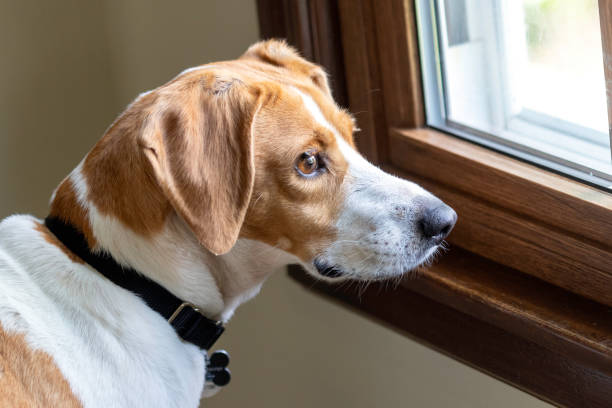Separation anxiety is a common issue for many dog owners, especially with certain breeds that are more prone to it. These dogs can experience distress when left alone, which leads to behaviors like excessive barking, chewing, or even self-harm. Understanding how to ease these fears and make them feel comfortable in their own space is essential.
The good news is that there are several practical approaches you can take to help your canine handle being apart from you, especially if you’re dealing with dog breeds with separation anxiety. By using the right strategies, like creating a safe space, providing mental stimulation, and calming products, you can help your dog cope with anxiety naturally. Let’s read about these strategies in detail.
Set Up a Relaxing Environment for Your Dog
Providing your dog with a designated safe space can be incredibly helpful. This area should be a quiet and comfortable environment where your canine feels secure. It could be a crate, a specific room, or a cozy corner. Adding familiar items like toys, a blanket, or your clothing can provide comfort and help ease their anxiety. Make sure this space is free from distractions and allows your dog to feel like it’s their personal haven. Additionally, ensure that this area is safe from potential hazards that may make the situation worse, such as harmful objects or spaces where they could hurt themselves.
Ease Your Dog into Independence Step by Step
Gradual desensitization means gradually helping your dog become more comfortable with being alone. Start by leaving them for short periods and gradually increase the time apart. This method helps them understand that being alone is not something to fear. When you return, avoid making a big fuss so they don’t associate your arrival with heightened emotion. Consistency is key in making this technique effective, so be patient with the process. During the desensitization process, you can also try to distract your dog with a treat or toy just before leaving to redirect their focus from the departure itself.
Use Anxiety-Relieving Products
Various products are designed to alleviate anxiety in dogs. Anxiety wraps, calming sprays, or pheromone diffusers can help create a calming atmosphere. Some dogs also respond well to calming music or white noise, which can mask any sounds that may increase their anxiety. These products can work in conjunction with behavioral training to improve your dog’s overall well-being when faced with separation. Experimenting with these products might take some time, but they can offer great relief for both you and your pet. It’s important to consult with your vet before using any new products to ensure they are safe and effective for your canine’s specific needs.
Using CBD to Support With Separation Anxiety
CBD (cannabidiol) has become a popular natural option for helping dogs manage separation anxiety. It interacts with the endocannabinoid system in dogs, which plays a role in regulating mood and stress responses. Many pet owners find that CBD promotes a sense of calmness and reduces anxious behaviors such as whining, barking, and pacing during alone time. Research shows that CBD can decrease some stress-related physiological and behavioral signs in pets experiencing separation anxiety. It’s important to consult with a veterinarian before starting CBD, as they can guide on appropriate dosing and product quality.
If your pet is one of the many dog breeds with separation anxiety, it’s crucial to tackle the issue early to protect their well-being. Helping your dog cope with separation anxiety requires time, patience, and the right approach. By creating a safe space, using desensitization techniques, and providing mental and physical engagement, you can ease their distress.
Published by HOLR Magazine.


